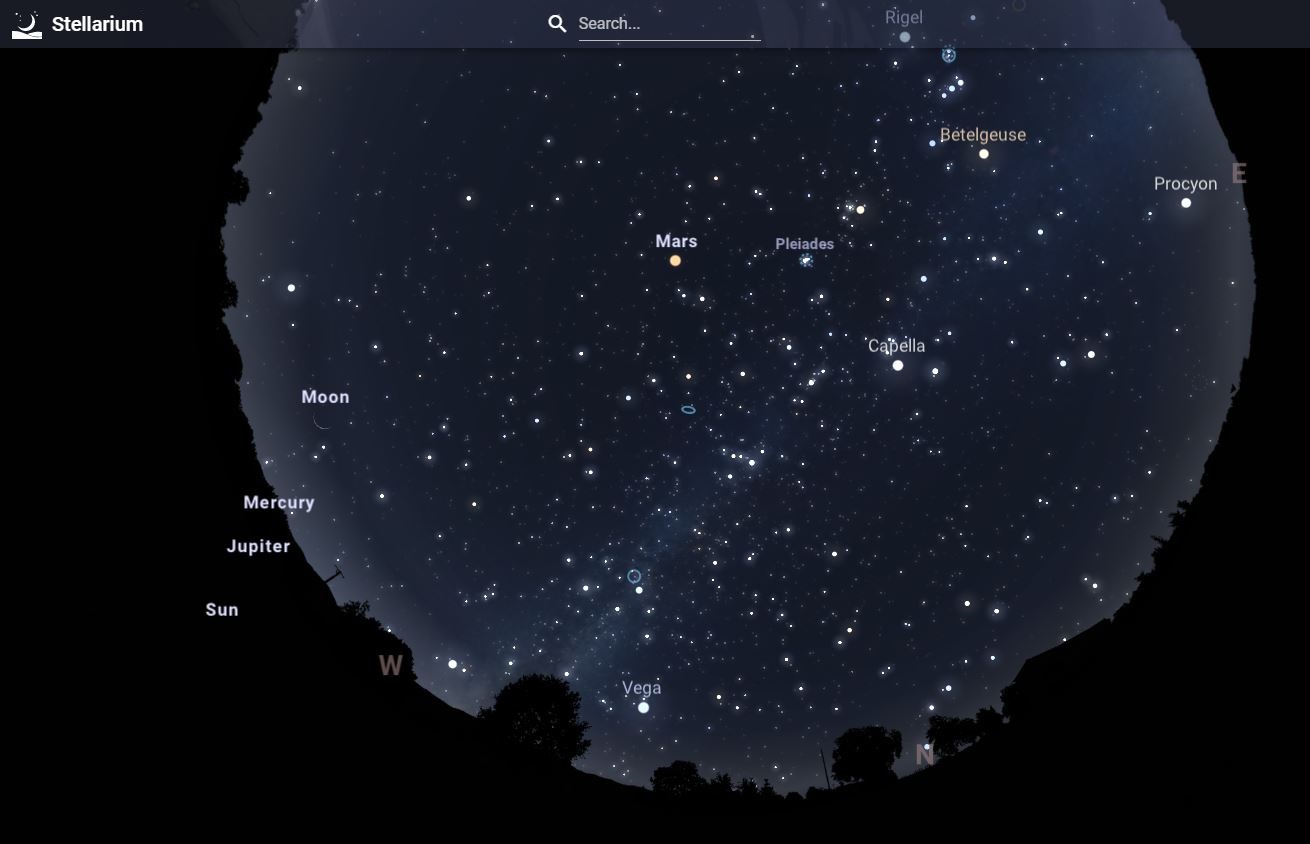
Stellarium is a program that allows us to simulate a planetarium on desktop computers, it is free software and is available for the main operating systems
After 20 years of development the release of the new version of the Stellarium 1.0 project was announced, a version that marks a fairly important version change, in addition to it is the first version of the software that implements support for QT 6, among other novelties.
For those who are unaware of Stellarium, they should know that develops a free planetarium for three-dimensional navigation through the starry sky. The basic catalog of celestial objects contains more than 600 thousand stars and 80 thousand deep sky objects (additional catalogs cover more than 177 million stars and more than one million deep sky objects), and also includes information on constellations and nebulae. .
The interface provides flexible scaling, 3D visualization, and simulation of various objects. Projection onto the planetarium dome, creation of mirror projections, and integration with the telescope are all supported. Plugins can be used to extend the functionality and control of the telescope.
Stellarium 1.0 Main New Features
In the new version, transitioned to Qt6 framework, although it is mentioned that Qt5-based packages will continue to be released for legacy or deprecated systems. This may include many Windows users who have to run ANGLE mode. These packages are labeled with a version number such as 0.22.3.
Another change that stands out in this new version of Stellarium 1.0 is that now counts an acceptable level of accuracy in replaying past states, in addition to a new significantly improved sky lighting model is proposed, as well as improvements in details when simulating eclipses.
In addition to this, the expanded capabilities of the astronomical calculator are also highlighted, as well as improvements in the performance on displays with high pixel density (HiDPI), an improved interpolation and added information on the perception of starry sky objects in the culture of the peoples of the Samoan archipelago.
On the specific changes part, we can find that a modified OpenIndiana patch for the AstroCalc tool was added, as well as a modified OpenBSD patch for GPS compatibility.
On the other hand, the added ability to create a KML map of solar eclipses in the AstroCalc tool, as well as support for additional names to the watchlist and also the addition of a new default atmosphere model path in the "Atmosphere Details" dialog.
Regarding the correction of errors, the following stand out:
- Added a new tooltip for the AstroCalc/Phenomena tool
- Fixed installation of constellation art in Babylonian Seleucid sky culture
- Fixed use of deprecated combobox signal in Telescope Control plugin
- Fixed selection in Solar System Editor plugin for Qt6 based package
- Fixed missing segments in solar eclipse kml
- Fixed state of buttons in AstroCalc tools
- Fixed inconsistency in units.
- Fixed sorting of path width and duration columns in AstroCalc/Eclipses tool
- Fixed ShowMySky running on HDPI GPU with limited graphics performance
If they want learn more about the changes of this new version, you can consult the complete list In the following link.
How to install Stellarium on Ubuntu and derivatives?
If you are interested in being able to install this new version of Stellarium on your system, You can do this by adding the application repository to your system.
For this, the first thing you should do is that you are going to open a terminal (you can do it with the shortcut Ctrl + Alt + T) and in it we are going to type the following command:
sudo add-apt-repository ppa:stellarium/stellarium-releases -y sudo apt-get update
And we proceed to install the program:
sudo apt-get install stellarium
Installing Stellarium from Snap
If you don't like adding repositories to your system, you should know that it is also possible to install this application with the help of the Snap packages.
You just have to make sure that your distribution has the support to be able to install applications of this type.
In a terminal we are going to type the following command to install the application:
sudo snap install stellarium-plars
Installing Stellarium from AppImage
Finally, if you do not want to install anything on your system, you will be able to enjoy this application without the need for installations.
Solo You must download the Appimage package of the application, for this we are going to open a terminal and in it we type the following command:
wget https://github.com/Stellarium/stellarium/releases/download/v1.0/Stellarium-1.0-x86_64.AppImage -O stellarium.AppImage
Then we give execution permissions to the application with:
sudo chmod +x stellarium.AppImage
And we can run the application with:
./stellarium.AppImage
With this we already have the program, now we just proceed to open it and begin to know a little more about it.